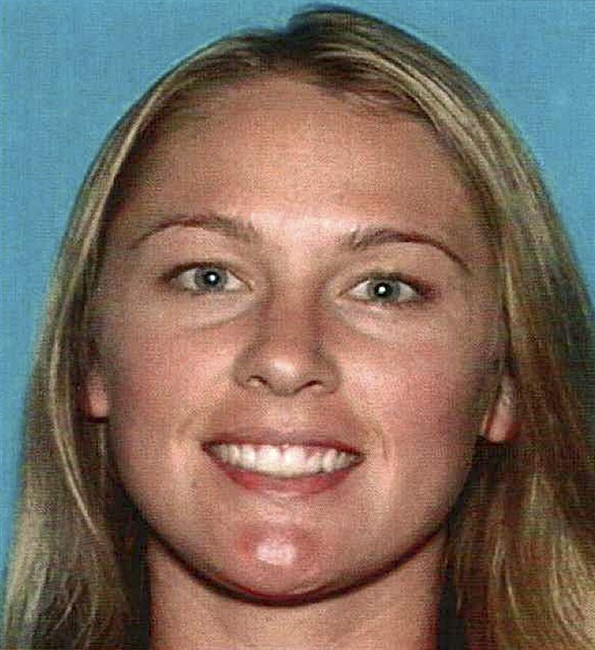There are times when life imitates art to a degree that it’s almost impossible to explain it away as coincidence.
It’s not difficult to understand why, when Denise Huskins went missing in 2015, the world was quick to draw parallels between her case and the movie Gone Girl, which had premiered in theatres just six months earlier.
For the uninitiated, Gone Girl stars Rosamund Pike and Ben Affleck as married couple Amy and Nick. Nick is having an affair, then after a break-in at their home leads to Amy’s disappearance, Nick becomes the prime suspect. Spoiler: Amy returns home after some time, armed with a tale of an abusive kidnapping and rape. The suspicions and questions only grow from there.
Now, a new Netflix documentary, titled American Nightmare, is primed to take a deeper look into Huskins’ story, how accusations of a hoax nearly ruined her life, and what happens when police operate under their own biases and fail to take victims seriously.
What actually happened to Denise Huskins?
On March 23, 2015, Huskins vanished from her California home, where she lived with her boyfriend Aaron Quinn.

A handout photo of Denise Huskins.
Vallejo Police Department
Quinn called police the next day to report her as missing, claiming a man in a wetsuit and other assailants broke into their home in the middle of the night, drugged them both, forced Huskins to tie Quinn up and kidnapped Huskins.
Quinn told police the attackers said they were part of a well-organized, highly trained group that was seeking US$8,500 ransom from Quinn for Huskins’ return.
He also told authorities the kidnappers said they would give him 48 hours to complete numerous tasks via email and phone, including calling in sick to work for both of them. He said he was ordered to pay the ransom and not call police. The assailants told him they had installed cameras in the home to make sure he didn’t try to contact the authorities.
Quinn immediately became the main suspect as media swarmed in to cover the case.
FILE – In this March 25, 2015 file photo, a news crew reports in front of the home of Denise Huskins.
Chris Riley / Vallejo Times-Herald via AP,
Things took a bizarre and perplexing turn 48 hours later, when Huskins was dropped outside her mother’s home in Huntington Beach, Calif., a seven-hour drive from where she was taken.
She told police that she had been kidnapped and raped twice. Instead of believing her, police immediately pivoted and focused suspicion on Huskins.
“It was such an incredible story, we initially had a hard time believing it,” Vallejo police Lt. Kenny Park said at the time of the abduction report from Quinn. “Upon further investigation, we couldn’t substantiate any of the things he was saying.”
Police expressed disgust at the resources the two squandered — over 40 detectives had worked on the case — and the fear they instilled in the community over what was reported as random violence.
“Devoting all of our resources 24 hours a day in a wild goose chase, it’s a tremendous loss,” Park said. “It’s disappointing, it’s disheartening. The fact that we wasted all of these resources for nothing, it’s upsetting.”
FILE – Lt. Kenny Park with the Vallejo Police Department fields questions from the media during a press conference about the abduction and ransom of Denise Huskins on March 25, 2015. Park confirmed that Huskins was found safe in Huntington Beach.
Chris Riley / MediaNews Group/Vallejo Times Herald via Getty Images
Despite maintaining their innocence, Quinn and Huskins were accused by police and the media of creating a hoax — although no one could explain why they would make up such a tale.
A major twist
Just as the world was becoming convinced the pair had concocted the scheme, a person claiming to be the kidnapper contacted the San Francisco Chronicle, expressing their annoyance that the crime was being passed off as a hoax. To support his claims, he used an anonymous email address to send images of where Huskins had been held, as well as a recording of her voice to prove she was alive. He also claimed Huskins was abducted by a team of elite criminals practicing their tactics.
Police realized the couple were telling the truth after a disbarred Harvard University-trained lawyer, Matthew Muller, was implicated in another crime three months later and tied to the abduction.
FILE – This June 2015, file booking photo provided by the Dublin, Calif., Police Department, shows Matthew Muller after he was arrested on robbery and assault charges.
(Dublin Police Department via AP
Muller was arrested in an attempted robbery at home about 65 kilometres from where Quinn and Huskins lived. Authorities said they found a cellphone they traced to Muller, and a subsequent search of a car and home turned up evidence, including a computer Muller stole from Quinn, linking him to the abduction.
Muller, police learned, used a drone to spy on the couple before he broke into their home with a fake gun, tied them up and made them drink a sleep-inducing liquid, prosecutors said. They were blindfolded while Muller played a recorded message that made it seem as if there was more than one kidnapper.
He put Huskins in the trunk of his car, drove her to his home in South Lake Tahoe and held her there for two days. Investigators said they found videos of Muller arranging cameras in a bedroom and then recording himself twice sexually assaulting Huskins.
Muller eventually pleaded guilty to the kidnapping and is now serving a 40-year prison term.
FILE – Denise Huskins and Aaron Quinn stand in silence during a press conference on July 13, 2015.
Chris Riley / MediaNews Group/Vallejo Times Herald via Getty Images
The aftermath
American Nightmare is an apt description for the real-life horror story Huskins and Quinn were put through.
“(Had Muller not been caught) I don’t know if I would’ve had the confidence to be able to return to work knowing that people would still think that I’m some con artist or hoaxer,” Huskins, who works as a physical therapist, told People. “A big part of our job is putting our hands on people, quite literally, to help facilitate their healing. And a big piece of that is trust and how can you trust someone who lied about something so significant as a kidnapping? I’m not sure where we’d be.”
“Those months in between were unsustainable and we weren’t able to go back to work,” Quinn said in their joint interview. “Partly because of trauma and partly because they wouldn’t let us. Who wants to hire a hoaxer? So that’s a big challenge in the digital age. You can’t move towns and get away from it. Anyone can just search you and then decide ‘I don’t want to work with this person,’ or ‘I don’t want to hire this person.’”
In happier news, the couple has gone on to start a family and now have two daughters.
In 2018 they successfully sued the City of Vallejo for defamation and won a US$2.5 million settlement.
“I hope people come away from after they watch (American Nightmare), that this isn’t a bizarre kidnapping,” Quinn, who was interrogated for 18 hours by police, told People.
“What’s quite bizarre is just the absolute lack of any sort of investigation. All the evidence was there to catch Muller and the other perpetrators within the first 24 hours, but the police put their head in the sand and said there was no sky. So that is the scary part, is that the confirmation bias and tunnel vision will just lead them to do nothing. This case didn’t require Sherlock Holmes. This required basic police work.”
FILE – Lawyer Anthony Douglas Rappaport speaks at a news conference with his clients, Denise Huskins and her boyfriend Aaron Quinn, right, in San Francisco, Thursday, Sept. 29, 2016. Matthew Muller, a disbarred Harvard University-trained attorney pleaded guilty Thursday to kidnapping Huskins in a bizarre case that police in California initially dismissed as a hoax.
Sudhin Thanawala / The Associated Press
American Nightmare features extensive interviews from Huskins and Quinn, who detail the unfair vilification they endured from both police and the general public.
Audio and video recordings detail the intense interrogating they each faced at the hands of the local police and FBI and, later in the series, a former detective who helped arrest Muller discusses the similarities she witnessed between Quinn and Huskins’ case and the ones that were found at Muller’s other home invasion.
—
‘American Nightmare’ is available for streaming on Netflix starting Jan. 17.





















